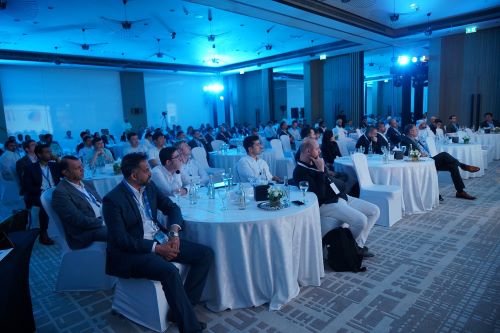Accelerating the Energy Transition with Digital Transformation

In early September, the United Nations reported that global emissions need to fall 43% by 2030 and 60% by 2035. It found that although we have made progress toward emissions reduction since 2015, when the world was headed for a 3-degree Celsius rise, on our current trajectory, we are still headed for a 2.5 degree rise, far above the 1.5-degree target at which climate crises begin to balloon far beyond what we already are seeing.
But how can we make progress and start doing so quickly?
The UN study mentioned above states that industrial emissions comprise 25% of global emissions and identifies energy efficiency improvements as one important pathway to reducing the sector’s emissions. The study notes that energy efficiency improvements in industry could not only make a big difference but also are low cost – on the same scale as solar and wind power generation.
Data drives efficiency
One of the most effective ways to drive operational efficiencies – which often include or result in energy efficiencies – is to pursue digital transformation. For energy companies, digitizing operations can result in quality, safety, and performance improvements, as well as emission reductions.
A study by Accenture for the World Economic Forum found that digital technologies deployed in energy, materials and mobility could reduce global emissions by up to 10% by 2030 through accelerated digitization adoption and by a full 20% by 2050.
This interplay and overlap between digital transformation and the energy transition was a key theme of an event hosted by GE Vernova’s Digital business in Dubai: “GE Digital Transform: Exploring the intersection of Digital Transformation and Energy Transition.”
The event, which hosted customers and stakeholders from across Middle East and Africa, explored technologies and outcomes, as well as the change management required to implement these solutions, as part of a broader commitment to supporting customers along the energy transition and decarbonization journey.
“In an environment where energy and industrial firms are facing multiple challenges, including cost containment, and regulatory and market requirements to address their environmental footprint, digital transformation creates the perfect opportunity to address these topics and more,” said Mark Wise, Chief Commercial officer, GE Vernova’s Digital business.
Engineers, directors, vice presidents, and operations, reliability and plant managers from GE Vernova’s customers attended the event, which highlighted customers’ digital transformation success stories, including the use of software to optimize performance today while building for tomorrow. The event discussed solutions such as Asset Performance Management (APM) implementations that can enhance operations across assets and fleet while addressing sustainability and revenue goals. Senior customer representatives also shared insights and key learnings from their transformation journeys.
The event also highlighted the opportunities to leverage digital transformation as part of a company’s decarbonization and energy transition journey.
Transform in three steps
Before any progress can be made, digital transformation is required. This transition involves three steps: connect assets and digitize; optimize; and innovate and scale.
The first step is essential, because by adding sensors and connecting them to on-premises or cloud-based databases, and by digitizing monitoring and operations, organizations begin to gain real-time visibility into asset performance across equipment, systems and even across multiple facilities. Data can also be collected manually through operator rounds. This means the start of data collection is crucial to the process.
The next phase uses that data to optimize operations. By analyzing against prior performance or against company-wide or global datasets, operators gain new levels of visibility into plant operations and take action to boost productivity, reduce inefficiencies and costs, enhance quality and enable greater flexibility.
The third phase is about adding machine learning (ML) and artificial intelligence (AI) to drive innovation and growth to achieve outcomes such as value-based service differentiation, optimized maintenance schedules and predictive, rather than scheduled or reactive, maintenance.
With this digitized industrial environment, the energy sector is equipped with tools to support emission-reduction actions.
Software for a sustainable future
Key solutions serving all of these industries includes Asset Performance Management (APM). This suite of software from GE Vernova’s Digital business can be applied to all power generation applications – from gas to renewables to nuclear, transmission and distribution (T&D), as well as throughout the entire oil and gas process. Extensive APM solutions include asset condition monitoring, predictive and preventive maintenance, mechanical integrity and asset strategy implementation.
Digital twin solutions that create virtual models of real facilities, from power to hydrocarbon operations, allow operators to model different operating scenarios to determine more optimal equipment configurations. For power plants, this can include better outage planning and improved heat rate and fuel consumption.
More specialized software for energy companies includes products like CERius, from GE Vernova’s Digital business, that helps them measure, manage and reduce their carbon emissions and build a net-zero strategy.
The climate is not waiting for us to take action. Weather catastrophes are on the rise and people across the globe are paying the price. The energy industry can make a huge difference in a short amount of time by leveraging the power of digital transformation to drive energy efficiency, reduce emissions, and manage the smart, flexible and resilient grid the world needs to meet the demands of a net-zero carbon future.
Last Updated on 1 year by News Desk 1













